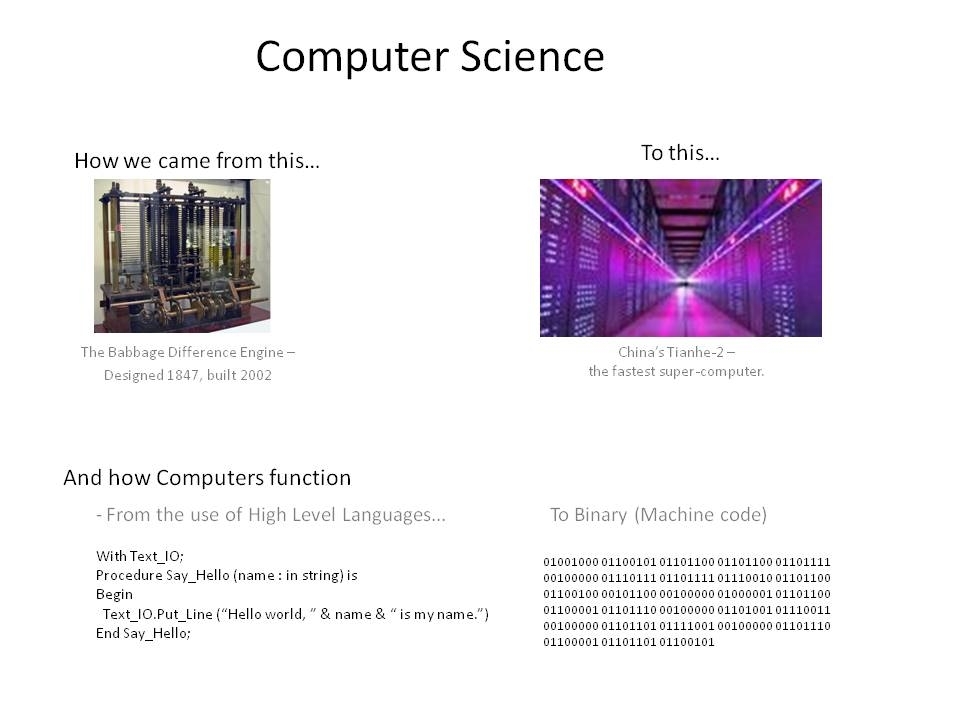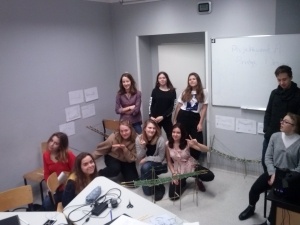Group 4: Experimental sciences
Biology, Chemistry, Physics, Design Technology, Computer Science
Biology HL/SL
Biology, the study of life, looks at all forms of life, from the smallest microorganisms to the largest ecosystems which form the habitats of our planet, critical to preserve and enhance life.
IB biology focuses on understanding processes, their outcomes and interconnections. Major topics and issues are scientific reliability, critical analysis of data and practical skills, both lab and field work oriented. Correlation vs. causation, function – structure relationship, regulation of processes and real-life applications of science are among the most discussed areas.
A mole is a small mammal which lives underground. The mole has adapted to it’s environment: it has large powerful front limbs and large spade-like paws, small eyes, ears and small hind limbs.
Profilaktyka i komunikacja to przedmiot seminaryjny. Zaliczany jest obecnością i nie podlega ocenie. Program zawiera elementy wychowania seksualnego, profilaktyki uzależnień, wiedzy o emocjach i asertywności, treningu komunikacji oraz wiedzy o wybranych chorobach – anoreksji, bulimii, depresji i innych. Pracujemy metodami warsztatowymi, burzą mózgów, a także poprzez dyskusję.
Biologia polska dla pre-IB jest przedmiotem prowadzonym według programu kuratoryjnego, który uwzględnia dwa główne tematy – bioróżnorodność oraz biotechnologię z elementami genetyki medycznej. Podczas lekcji stosowane są: burza mózgów, dyskusja, wykład, prezentacje oraz sprawdziany oparte na pytaniach otwartych.
Biologia Higher Level to zaawansowany, dwuletni kurs dla uczniów planujących aplikowanie na uczelnie medyczne, biotechnologiczne, bioinżynieryjne, weterynaryjne, farmaceutyczne, a także na psychologię i pokrewne kierunki. Jest to wymagający przedmiot zajmujący 6 godzin tygodniowo. Największy nacisk jest kładziony na umiejętności analityczne (w tym analiza danych), łączenie faktów, korzystanie ze źródeł naukowych i ich krytyczną ocenę oraz przede wszystkim elementy praktyczne. 20% oceny maturalnej jest zdobywane poprzez przygotowanie pracy naukowej podczas dwóch lat pracy, 80% punktów pochodzi z majowych matur po zakończeniu IB2. Znacząca część lekcji jest obowiązkowo poświęcana na elementy doświadczalne. Biologia IB Higher Level odchodzi najdalej jak to możliwe od pamięciowego przyswajania dużych porcji wiedzy encyklopedycznej i jest programem zgodnym z najnowszymi odkryciami z zakresu biologii oraz medycyny.
Chemistry HL/SL
Chemistry deals with the composition, structure, and properties of substances and with the transformations that they undergo.
Chemistry has it’s roots in Alchemy, where Alchemists attempted to transform different substances into gold. This was the beginning of experimental science, and although now discredited, Alchemy did provide us with the rigours of laboratory experimentation.
Chemistry is taught at both Standard and Higher level, with options available, to meet the requirements of students who want to pursue chemistry at further education, and those whose planned future is not so directly allied to chemistry.
A mole is a set number of chemical units (the same number as atoms in 12 grams of Carbon-12) and is used as a unit of the amount of the pure substance.
Physics HL/SL
Physics is the most fundamental of the experimental sciences, as it seeks to explain the universe itself from the very smallest particles to the vast distances between galaxies.
Students will study theory along with experimentation. The physics course allows students to develop traditional practical skills and techniques and increase their abilities in the use of mathematics, which is the language of physics.
When dropped from a high building, the comparative velocities of (a quantity of) the chemical mole and the biological mole are studied.
Design Technology HL/SL
IB Design Technology is a multi-disciplinary intensive program which answers the question:
How to design, produce and manage goods for rational reasons?
Students will acquire knowledge and skills important in the generation of ideas, communication, modelling and factoring processes.
We guarantee access to advanced CAD/CAM devices useful for quick, precise and efficient realisation of any kind of sophisticated project.
The course is designed to familiarize students with the specificity of CAD / CAM design and to present the methodology needed to formulate and deliver individual projects in the ib design technology diploma program.
The time available in the first semester will be devoted to acquainting young people with the basic techniques of modelling forms using cad programs, as well as communicating and aesthetic presentation of the designed objects.
In the second semester students will learn how to pre-design the projects.
Their task will be:
– Development of project assumptions tailored to the needs of a specific user group.
– Conduct research in market analysis, anthropology and psychology of use
– Formulate conclusions of the study in the form of consistent text presenting the selected product.
– Preparation of economic and product specifications.
The results of the second semester will be the basis for the final grade.
Description of the issues:
First semester:
1. Introduction to the subject
2. Communication with imaging. (an image speaks a thousand words)
3. Geometry and graphic modelling
4. Modelling in the CAD system
5. Getting to know the interface of 3ds max, Fusion 360 and mud box
6. Introduction to basic modelling techniques:
a. Sculpting forms in the mud box program
– Modelling tools
– Mapping and material channels
– Export forms to external programs
b. 3ds max and Fusion 360 modelling (optional)
– Modelling on polygonal objects
– Modelling using profiles
– Transformation and arrangement of forms
– Building scene
– Presentation of finished objects
– Animation and rendering
7. Additional topics:
a. Interactive presentations (unreal development kit)
b. Development of digital forms for CNC fabrication (3d printer, milling machine, laser)
c. Improvised subjects
Second semester:
1. Explain the basic assumptions of IB design technology
2. Presentation of IB design methodology
3. Preliminary analysis of the project:
a. Search for design opportunities
– correct problem definition
– graphic illustration of the problem
– conclusion
b. Market and user analysis:
c. Description of the project taking into account the results of the research (brief)
d. Marketing specifications
e. Design specification
For the IB 2 Design Technology course, students will continue to follow the syllabus to attain their required SL or HL standard. They will also learn more of practical applications and innovations in the world of advanced design.
Computer Science HL/SL
In Computer Science, students will learn how computers work, how a computer has a brain and a memory component.
Focusing on simplicity, the students will learn how to engineer software solutions, from problem analysis to design documentation to building and testing the software product.
We will look initially at the Java software language, building up from simple basic operations, ensuring the students develop a thorough understanding of the use of languages and logical analysis to break problems into simple design structures which will provide easy to read, easy to understand, easy to test software solutions.
Students can choose either the SL or HL course. SL course is 4 hours per week, with an additional 2 hours for HL. Both are taught along similar lines, though the HL course goes into more detail, and students will be expected to produce more complicated applications.
The Pre-IB Computer Science course is an extra-curricular activity. It will introduce students to the computer, how it works, and the basics of programming. An introduction to structured problem solving, and the use of tools to aid this process will be given. Students will also have an introduction to the use of languages in computing, and how to use the basic elements that will allow them to write their own programs.
In IB 1 Computer Science, students will learn how to approach problem solving in a structured way, through the use of flow-charting and pseudocode, and will be taught the use of implementation tools (in Java and Ada) to build their own solutions on the PC.
As a group, our students will also build an informative system for the Group 4 project.
For the IB 2 Computer Studies course, students will learn how to integrate software tools to engineer a structured software solution. This engineering approach to computing will help them produce simple solutions and to document and test in such a manner as to aid understanding of a delivered product by the end user. These tools and instruction in their use will meet (or exceed) syllabus requirements.
The school computer lab provides an environment where students can work on new and modern hardware (PC’s and servers), which is friendly and yet instructive.




